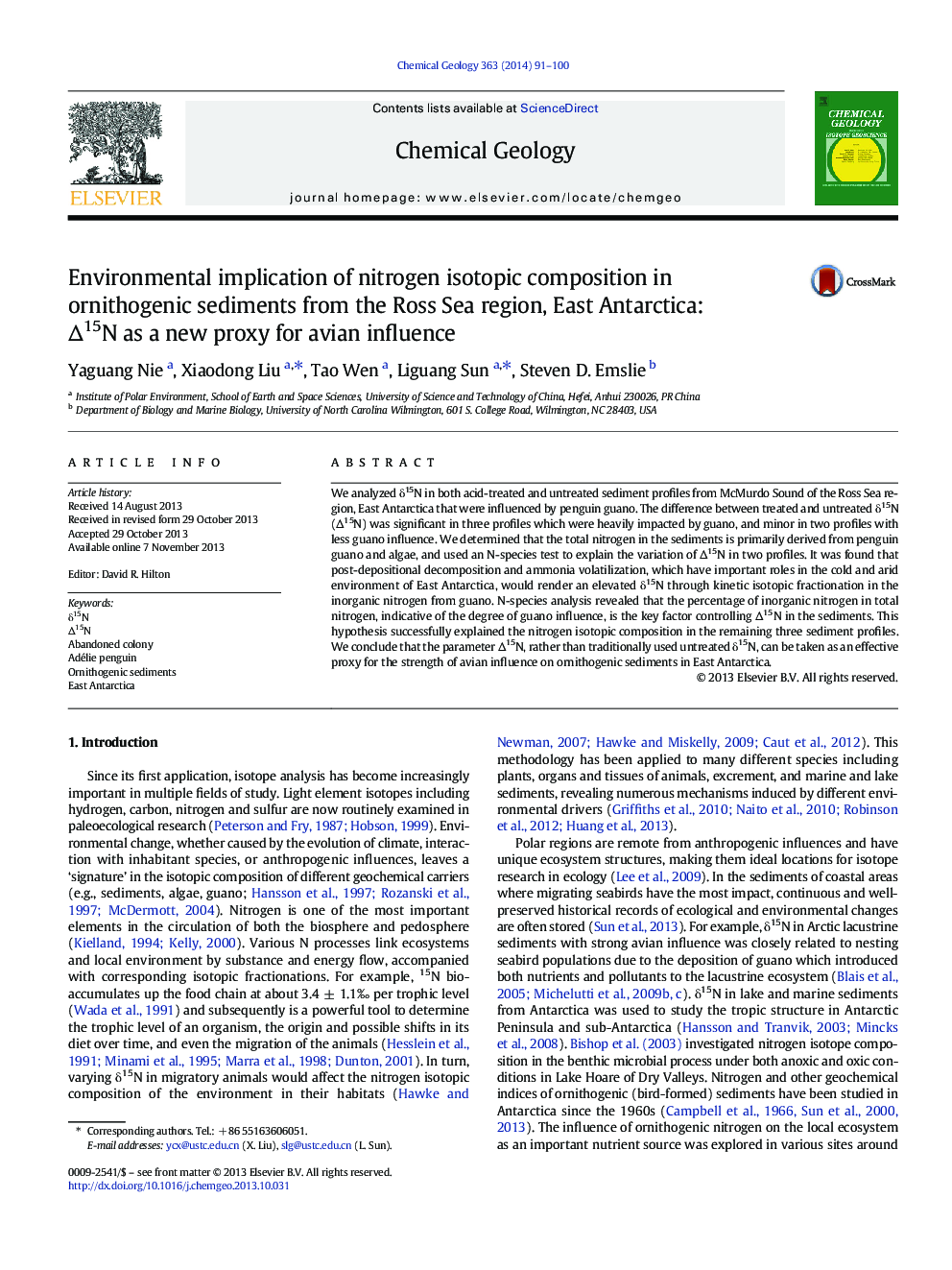| Article ID | Journal | Published Year | Pages | File Type |
|---|---|---|---|---|
| 6436682 | Chemical Geology | 2014 | 10 Pages |
â¢Different pretreatment for δ15N in ornithogenic sediments was investigated.â¢Main N-species in profiles with different avian influence were analyzed.â¢Î15N was defined as the difference of δ15N between two pretreatment methods.â¢Inorganic nitrogen from penguin guano was the main cause for Î15N.â¢Î15N as a new proxy for avian influence in the Ross Sea region was developed.
We analyzed δ15N in both acid-treated and untreated sediment profiles from McMurdo Sound of the Ross Sea region, East Antarctica that were influenced by penguin guano. The difference between treated and untreated δ15N (Î15N) was significant in three profiles which were heavily impacted by guano, and minor in two profiles with less guano influence. We determined that the total nitrogen in the sediments is primarily derived from penguin guano and algae, and used an N-species test to explain the variation of Î15N in two profiles. It was found that post-depositional decomposition and ammonia volatilization, which have important roles in the cold and arid environment of East Antarctica, would render an elevated δ15N through kinetic isotopic fractionation in the inorganic nitrogen from guano. N-species analysis revealed that the percentage of inorganic nitrogen in total nitrogen, indicative of the degree of guano influence, is the key factor controlling Î15N in the sediments. This hypothesis successfully explained the nitrogen isotopic composition in the remaining three sediment profiles. We conclude that the parameter Î15N, rather than traditionally used untreated δ15N, can be taken as an effective proxy for the strength of avian influence on ornithogenic sediments in East Antarctica.
